Solar Radiation and Climate - The Abiotic Environment
1/15
There's no tags or description
Looks like no tags are added yet.
Name | Mastery | Learn | Test | Matching | Spaced |
|---|
No study sessions yet.
16 Terms
Solar radiation
Of the solar radiation that gets to the Earth’s atmosphere, about 50% is absorbed by the surface of the earth.
It penetrates Earth’s atmosphere.
What can happen to solar radiation from the sun:
Reflected by the earth’s atmosphere.
Absorbed by the earth’s atmosphere.
Reflected by the Earth’s surface.
ALBEDO
The fraction of incident radiation that is reflected by a surface or body.
For direct light, the ALBEDO for the following systems:
Water surface = 2%.
Forests = 5-30%.
The more dense, the less percentage is reflected.
Snow and ice = 45-90%.
Weather vs. climate
Climate is long-term conditions.
Weather is a snapshot of the climate.
Humidity - Climate
Water content in the air is defined in terms of vapor pressure (unit: megapascal or Mpa).
The more water molecules in the air, the higher the percentage of humidity.
Vapor pressure (VP) - Climate
The amount of pressure water vapor exerts independent of the dry air (measured in Kpa).
The more moisture, the higher the atmosphere.
Saturation VP: the pressure that water vapor exerts when the air is moist and saturated (it can hold no more water).
Vapor pressure deficit = saturation VP - current VP.
Dew point temperature:
The temperature at which saturation VP is achieved for a given water content of the air.
Example: At 20°C, the saturation vapor of pressure is 2.3388 Kpa. If the current water vapor pressure s 2.0088 Kpa, what is the relative humidity?
Relative humidity = current VP / saturation VP * 100.
Relative humidity = 2.0088 / 2.3388 × 100 = 85.9%.
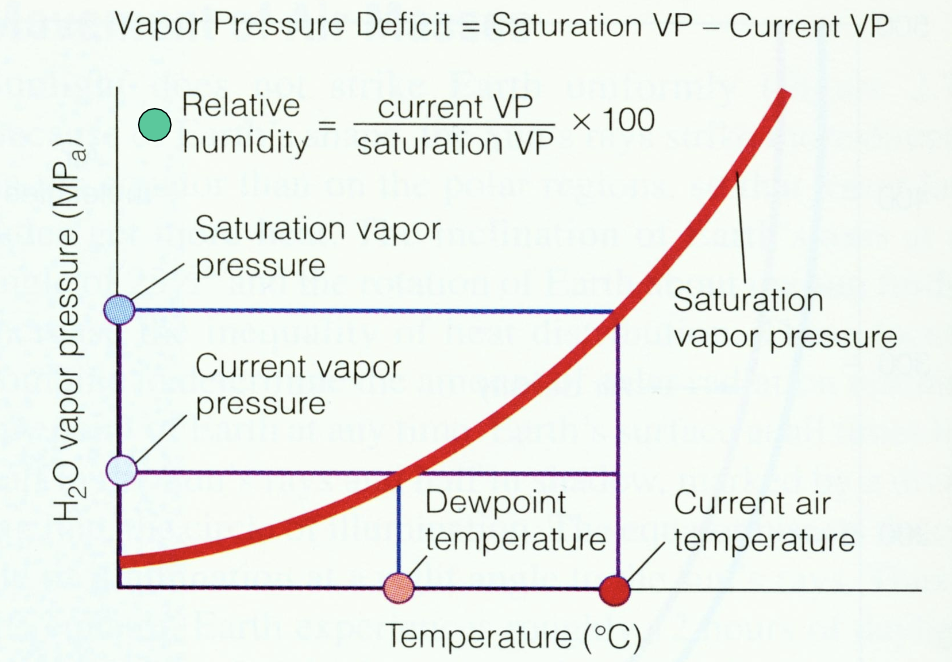
Dew point temperature vs. current temperature
Dew point temperature is always less than the current temperature.
It can never be higher than the current temperature.
Bigger difference between dew point and current temperature = drier air.
If they are the same, then the relative humidity is 100%.
Formation of a rain shadow
When the elevation is higher, the temperature is lower.
When the temperature is lower, the ability to hold moisture is lower.
The cloud has to let go of the water as it goes up. This makes a moist environment on one side of the slope.
When the elevation is lower, the temperature is higher.
Because the cloud has let go of the water, the air becomes dry. This makes a dry environment on the other side of the slope.
Example: Tibetan plateau.
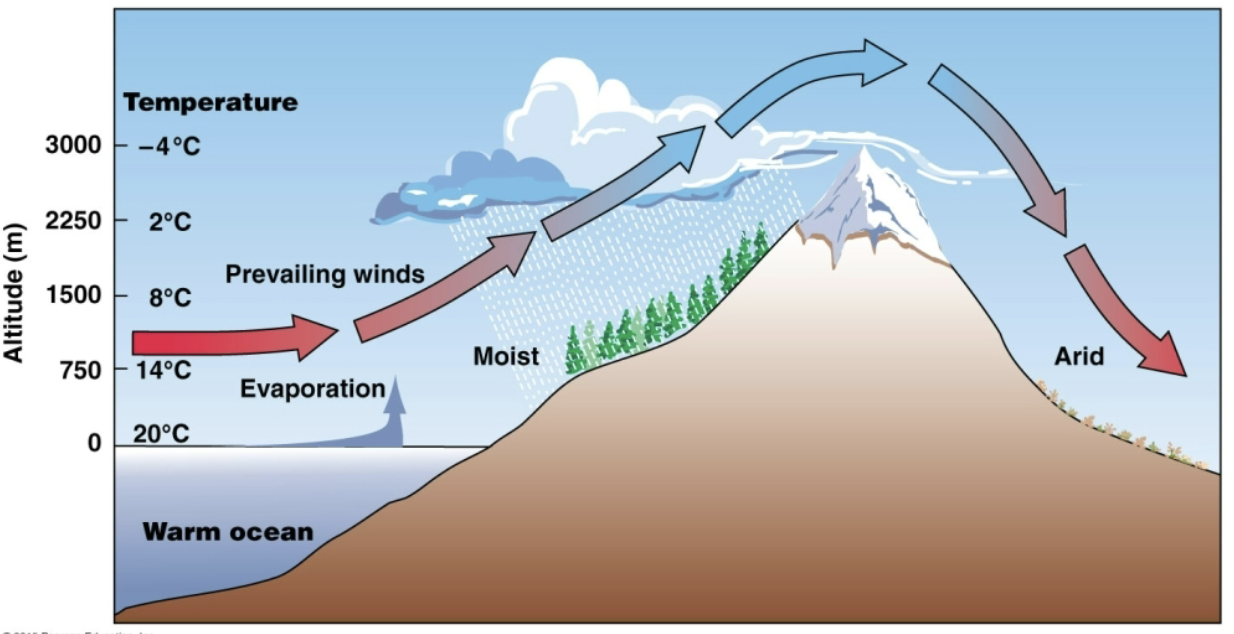
El Niño
A disruption of the normal ocean-atmosphere system in the tropical Pacific Ocean.
Originally recognized by the fishermen off the coast of South America as unusually warm water in the Pacific Ocean.
El Niño means Little Boy or Christ child, which was used for the tendency of the phenomenon to occur around Christmas.
Sometime called a “warm event.”
Happens every 4-7 years.
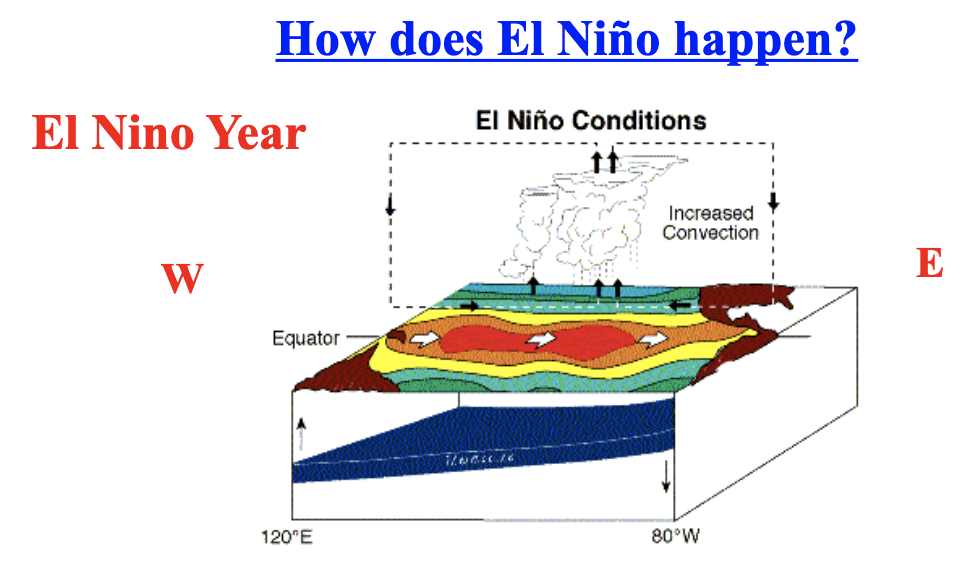
Normal Ocean-Atmosphere System
The atmosphere above the eastern South Pacific is dominated by a persistent high-pressure zone, while a low pressure zone dominates the west.
This difference in pressures drives the trade winds from east to west along the equator.
At the same time, high above the ocean surface, this wind circulation is completed, as it continues to blow around from west to east. The convection of air is called the Walker Circulation.
Trade winds pile up warm surface water in the west Pacific:
Sea surface is about ½ meter higher at Indonesia than at Ecuador.
Sea surface temperature is about 8°C higher in the west than in South America, due to an upwelling of cold water from deeper levels.
Causes warm water (less nutrients) to pile up in the west → cold (more nutrients) water piles up in the east.
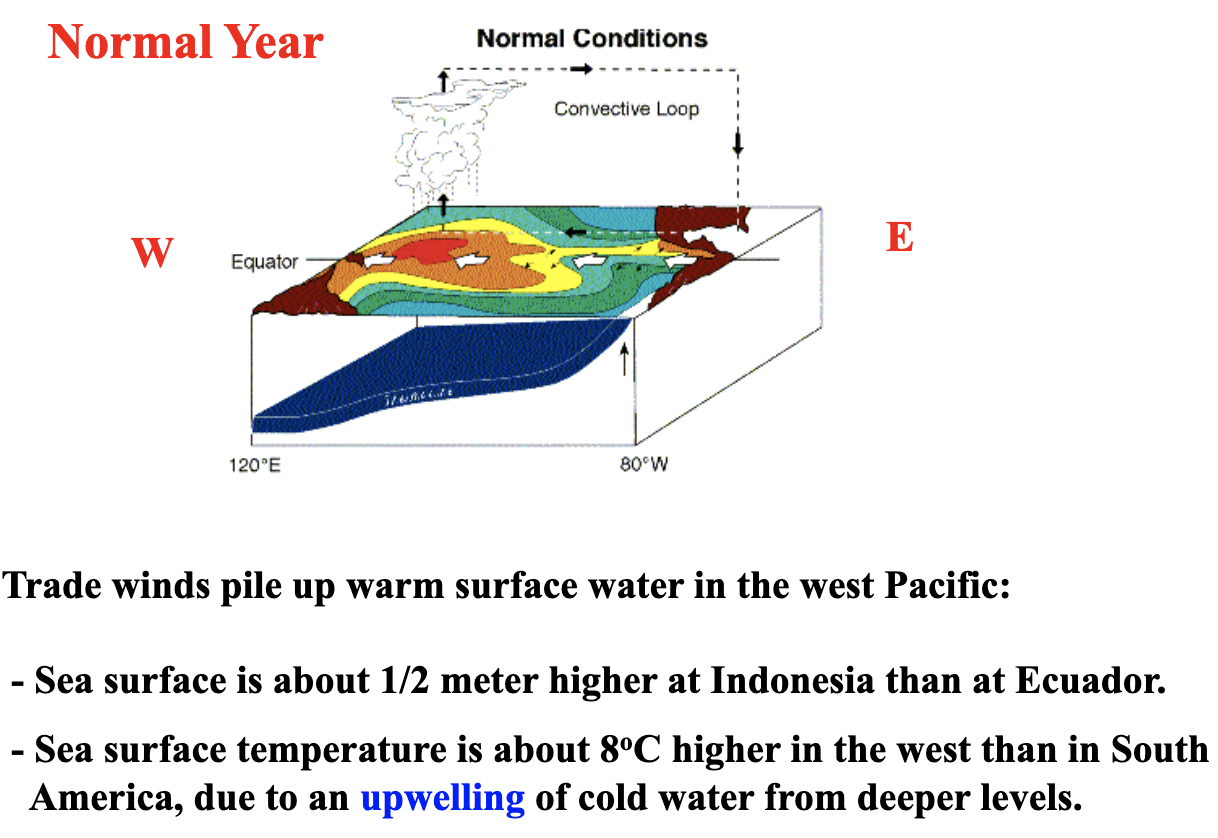
How does El Niño happen
Trade winds relax in the central and western Pacific leading to a depression of the thermocline in the west.
Instead of making one big loop, it makes two separate ones.
The result was a rise in sea surface temperature and a drastic decline in primary productivity.
Both the east and the west sides are warm.

Southern Oscillation (SO)
A seesaw of air pressures on the eastern and western halves of the Pacific.
Possible causes of El Niño and Souther Oscillation (ENSO)
Underwater earthquakes on the ocean floor.
The Pacific tries to respond to an annual time scale with the sun, but it can not because it’s too wide. This causes anomalies like El Niño.
Consequences of El Niño
Increased rainfall across the southern tier of the US and in Peru → destructive flooding.
Vegetation growth in Galapagos archipelago.
Drought in the West Pacific and brush fires in Australia.
The suppression of upwelling of nutrient-rich cold water in the eastern Pacific leads to decline in fishery and bird populations on the coast of Americas in the El Niño years.
An estimated 85% of the sea bird in Peru were killed in the 1982-83 El Niño.
During an El Niño year, animals starve due to lack of nutrients in the water.
The effect of ENSO can be felt in Antarctica. The number of births declines every four to seven years, coinciding with ENSO events. The seal declines may result from changes in the fish populations, caused possibly by ENSO.
Reduce corn harvest in East Africa.
Picture: North America is wet; South Africa, Australia, and South East Asia is dry.
Opposite for La Niña.

La Niña
Refers to a period when ocean temperatures across the central and eastern tropical Pacific Ocean are cooler than normal.
Occurs after some (but not all) El Niño years.
La Niña means Little Girl.
Sometimes called “anti-El Niño”, “cold event,” or “cold episode.”
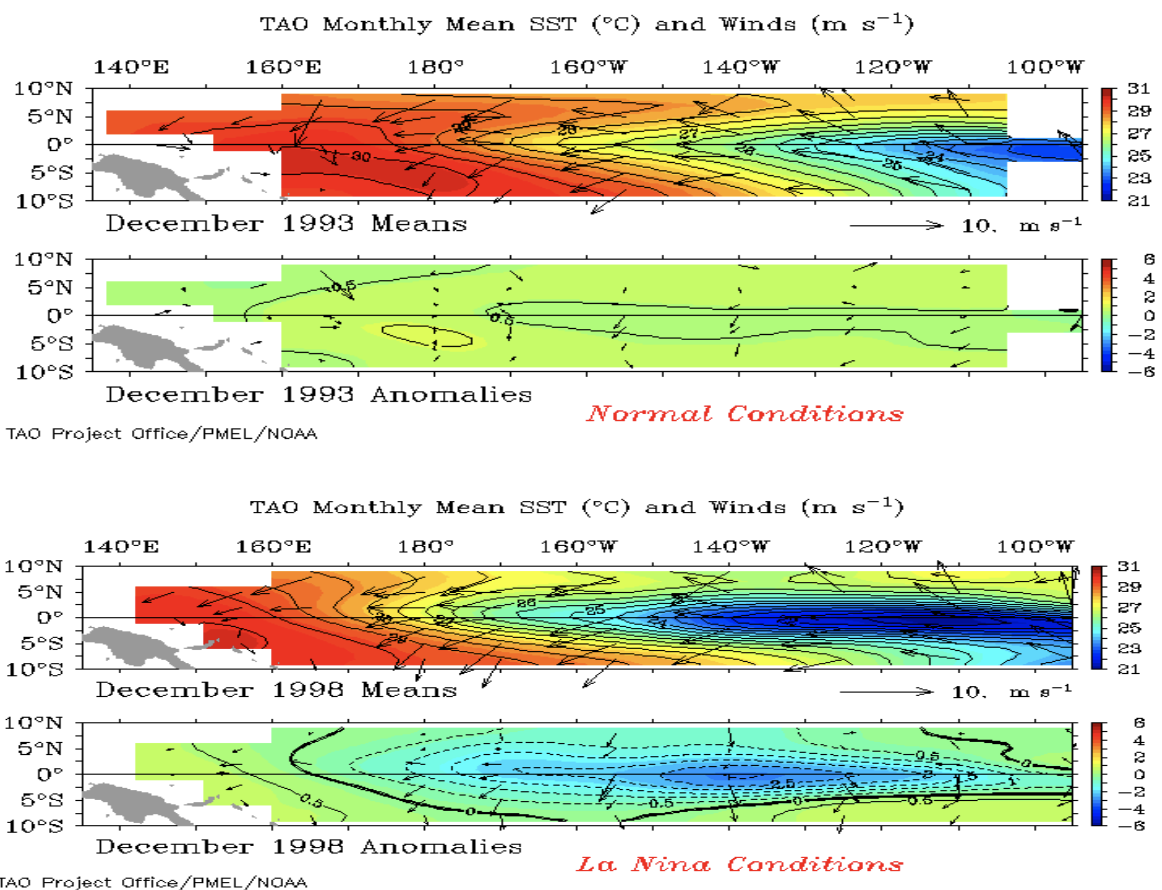
Consequences of La Niña
Warm winters in the Southeastern United States, colder than normal winters from the Great Lakes to the Pacific Northwest.
The 1988 La Niña has been tied ot the Bangladesh Floods and droughts in the Midwest United States.
Picture: North America is dry; South Africa, Australia, and South East Asia is wet.
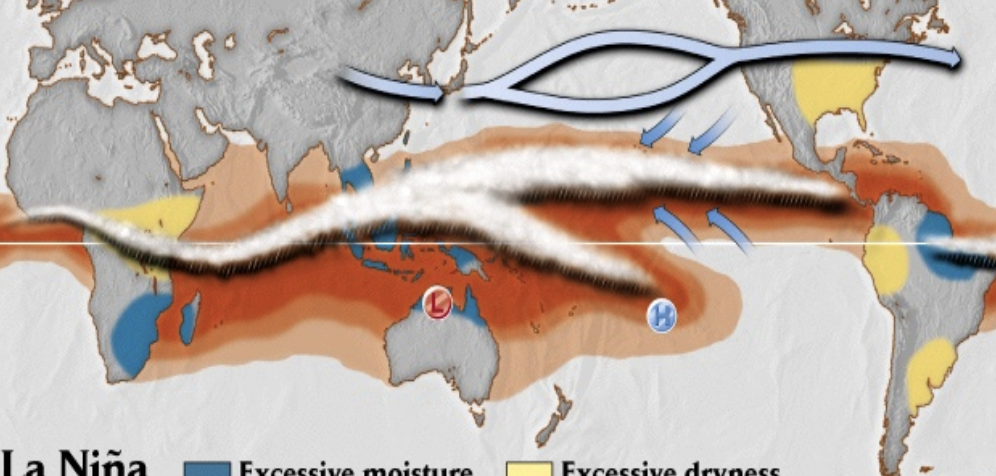
El Niño vs. La Niña events during the second half of the 20th century
Getting warmer over the years.
More intense and frequent El Niños, less intense La Niñas.
